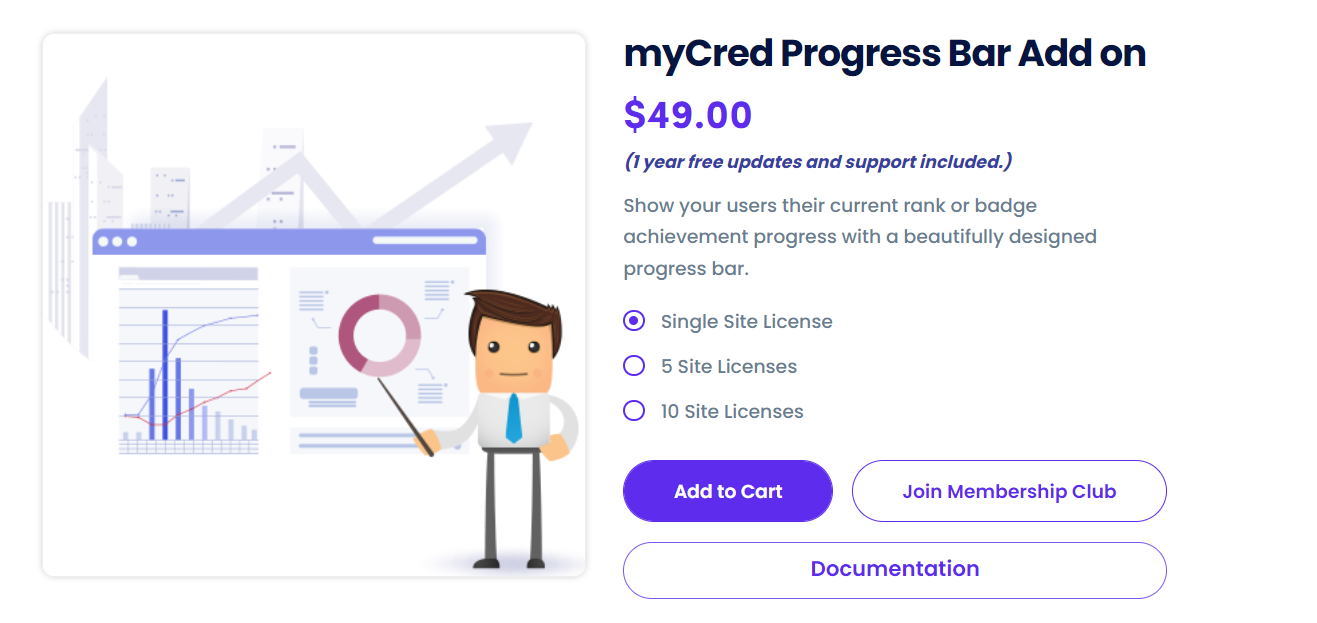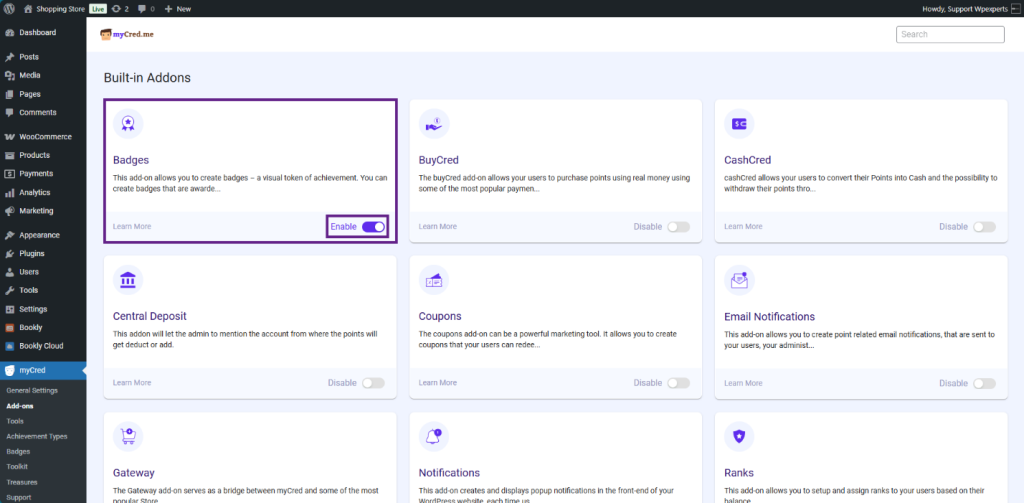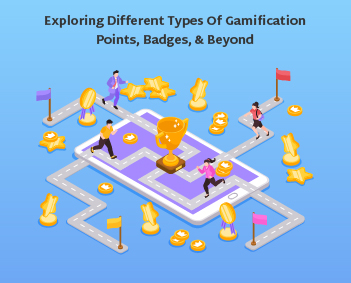
Why do millions of people chase a tiny digital flame on Duolingo or brag about hitting a Fitbit milestone? It isn’t the points. It isn’t the leaderboard. It’s the badge. Gamification badges turn abstract progress into visible proof of achievement that users can own, display, and share. They satisfy the human instinct for recognition and status while quietly encouraging people to stay engaged longer.
Whether you’re building an eLearning platform, a fitness app, or a loyalty program, gamification badges are the mechanic that keeps users hooked.
What Are Gamification Badges?
Gamification badges are digital symbols that recognize a user’s achievement, milestone, or participation. They act as visible markers of progress, like medals in sports or merit badges in scouting, but adapted for apps, websites, and online communities.
Unlike points and rewards, which are often temporary, gamification badges are permanent records of accomplishment that users can collect, showcase, and compare.
In practice, a badge might reward completing a language lesson streak on Duolingo, reaching 10,000 steps on Fitbit, or unlocking a loyalty level in an online store. These digital badges signal credibility, status, and mastery, which is why they’ve become central in eLearning platforms, fitness apps, and customer loyalty programs.
Badges also serve a dual purpose:
- They motivate the individual and send a social signal to others. In forums or communities, achievement badges build trust and reputation.
- In SaaS and retail, reward badges encourage repeat actions and increase retention.
By combining recognition with progress tracking, gamification badges create an ongoing feedback loop that keeps users active and engaged.
Why Gamification Badges Work
At their core, gamification badges succeed because they tap into fundamental human psychology. People crave recognition, visible progress, and social status. Badges deliver all three in a simple digital format.
- Recognition and Status – A badge acts as a public symbol of accomplishment. Just like medals or trophies, achievement badges tell users they’ve earned something worth showing off.
- Progress and Mastery – Humans are motivated by the desire to improve. Progression badges show advancement step by step, turning long-term goals into smaller, rewarding milestones.
- Social Proof – When badges are visible in a community, they signal credibility. Reputation badges in forums or apps encourage trust and encourage others to participate.
- Intrinsic vs. Extrinsic Motivation – Badges balance both. They provide external rewards while also reinforcing intrinsic drivers like learning, mastery, and belonging.
Research in behavioral design shows that structured reward systems, such as digital badges, increase user retention and encourage repeat actions.
That’s why you see them everywhere: in eLearning platforms, fitness apps, loyalty programs, and even corporate training systems. Properly designed, gamification badges don’t just decorate the user journey; they drive it forward.
Beyond Points and Badges
Gamification mechanics are game elements applied to drive user engagement in non-game contexts. Here are some categories and examples of mechanics beyond points and badges:
Progress Mechanics
- Levels – Mark progress through tiered stages.

- Progress bars – Visually indicate steps completed towards a goal.

Achievement Mechanics
- Challenges – Users complete tricky tasks to unlock achievements.
- Quests – Multi-step missions users embark on.

Social Mechanics
- Leaderboards – Rank users by status, performance, or progress.
- Social sharing – Enable users to share achievements with others.

Reward Mechanics
- Digital currencies – Points or coins earned through activities.

- Random reward schedules – Surprise prizes help incentivize ongoing engagement.
Experience Mechanics
- Social mechanics – Use points mechanism for social presents.

- Surprise – Hide surprises to delight users.

With creative mixes of these mechanics, the possibilities are endless for novel and engaging gamified systems beyond points and badges.
Real-Life Examples of Each Gamification Mechanic
Here are some real-world examples of how platforms effectively use these gamification mechanics:
- Duolingo implements levels to mark progress in language proficiency. Reaching new levels motivates continued learning.
- Strava, a fitness tracking app, utilizes leaderboards to let users compare running and cycling activities globally or with friends.
- Microsoft Rewards uses points as a virtual currency earned through using Microsoft products. Users redeem points for gift cards and other rewards.
- Nike Run Club features challenges like running 5k in under 30 minutes, pushing users to achieve fitness goals for special badges.
- Pinterest incorporates progress bars across its interface, like showing the percentage of profile completion, to urge users to fully populate their profiles.
- Tripadvisor offers users badges for milestones like writing 100 reviews. The social sharing of these badges motivates users to continue contributing content.
These examples demonstrate how various mechanics trigger our innate motivations and engagement. Mixing and matching game elements provides fresh varieties of gamification.
Types of Gamification – Essential Considerations
Gamification mechanics alone don’t guarantee success. The experience, design, and implementation approach matter the most. Here are the key considerations related to gamification types:
- Focus on intrinsic motivation – Effective gamification fulfills emotional needs, not just external rewards.
- Ethical considerations – Avoid manipulation or promoting undesired behaviors. Disclose when participation is voluntary.
- User experience integration – Mechanics should enhance, not distract from core activities. The best way of ensuring this may be to hire a specialist UX designer.
- Balance competition and collaboration – Enable individual and team motivations where appropriate.
- Avoid addiction tendencies – Limit daily status gains to promote healthy usage habits.
- Inclusivity – Make mechanics accessible and valuable for diverse audiences.
- Ongoing iteration – Continuously test and improve based on measured results.
With thoughtful design and ethical implementation, you can create engaging systems that provide value to your users.
How myCred Helps You Create Custom Gamification Badges
Designing and managing gamification badges can be complex, but myCred simplifies the process with its dedicated Badge Addon. Instead of hard-coding reward systems, you can create and automate badges directly inside WordPress.
- Customizable Rules & Triggers – Assign badges for any action you define: completing purchases, logging in daily, posting content, or reaching point milestones.
- Tiered Systems – Build structured badge hierarchies (bronze, silver, gold) to keep users motivated as they progress.
- Flexible Display – Showcase earned digital badges on user profiles, dashboards, or community leaderboards.
- Seamless Integration – Works with WooCommerce, LearnDash, BuddyPress, and other popular plugins to align badges with your platform’s core activities.
Here’s what the badge creation flow looks like inside myCred:
First, enable the built-in Badges addon

And then you can create badges as per your needs as seen below:

With these features, you’re not just handing out graphics—you’re building a structured achievement badge system that drives engagement, retention, and loyalty. Explore the full details on the myCred Badge Addon page.
Ending Note
Gamification badges are more than digital rewards—they’re powerful motivators that shape behavior, build loyalty, and keep users engaged. When designed with clear rules, progression, and social visibility, achievement badges turn casual users into committed participants. With the myCred Badge Addon, you can create fully customizable badge systems that fit your platform’s goals and user journey. Start building badge-driven engagement today and unlock the full potential of gamification with myCred.
